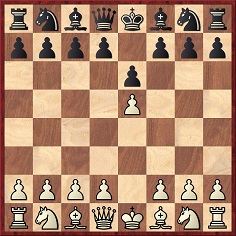
Edward Winter

Black to move (after 1 e4 e6 2 e5)
A straightforward illustration of the en passant capture is provided by the game Steinitz v Elson, Philadelphia, 12 December 1882 (C.N. 8590). Black played 2...d5, after which Steinitz exercised his right to capture the d-pawn en passant (3 exd6), i.e. as if the black pawn had advanced only one square.
- OED: ‘You prevent him by pushing immediately your queen’s knight’s pawn upon his knight, which ... obliges the adversary to take your pawn en passant.’ Practical Chess Exercises by W.S. Kenny (London, 1818), page 106.
- ‘This is called “taking the Pawn en passant” or in passing.’ The Popular Educator (Oxford, 1767), page 64.
Mark McCullagh (Belfast, Northern Ireland) quotes from page 5 (with three other instances elsewhere) of volume one of A Treatise on the Game of Chess by J.H. Sarratt (London, 1808):
‘15. A Pawn that is pushed two steps may be taken “en passant”, by the adversary’s Pawn.
N.B. This is not the case in Italy; a Pawn is allowed to pass “en prise”; and that is called “passar battaglia”.’
(5092)
From page 73 of Koltanowski’s Chess Annual 1955 (San Francisco, 1955):
‘Backward pawn – An unsupported pawn which cannot be moved immediately into the protection of another pawn.’
‘Center – Generally refers to the king’s and queen’s files and to a lesser degree to the bishops’ files.’
‘En passant – (Fr., in passing) The capture of a pawn which has moved from its second to its fourth rank by an opposing pawn which stands on its own sixth rank.’
‘Hanging pawns – Two or more connected pawns unsupported by others.’
If these definitions are taken literally, as definitions are supposed to be, an intriguing assessment may be made of this imaginary position:
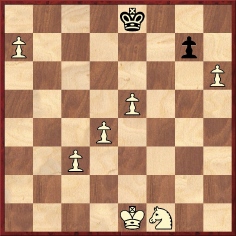
Black to move
White, to follow Koltanowski, has backward pawns on a7 and h6, quite apart from his hanging pawns on c3, d4 and e5. His knight is in the centre. Black advances his own backward pawn (1...g5), and White captures it en passant with his h6-pawn.
(4559)
It may be difficult to find a poorer explanation of the en passant rule than the one published over a century ago in The British Chess Code and still retained on page 34 of The International Chess Code (London and New York, 1918):
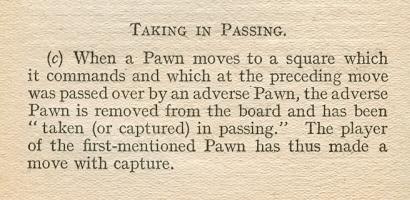
(5896)
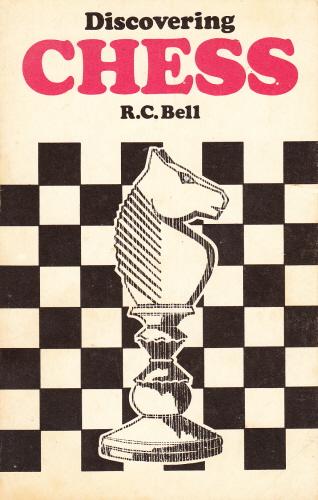
From the glossary (pages 4-9) of the original edition of Discovering Chess by R.C. Bell (‘R.C. Bell MB FRCS’), published in Aylesbury, 1976:
‘En passant: The capture of a pawn moving two squares on its initial move, by an opposing pawn that has been passed.’
(8460)
The following comes from page 17 of the 2015 book The Ultimate Chess Playing Guide by Terence North:
‘En passant is a move done by two restricting pawns, in which one pawn can catch the other, under extraordinary conditions, without moving to his square.’
(9618)
From page 270 of The Chess Companion by I. Chernev (New York, 1968):
‘The record holder of en passant captures in one game is Paulsen, who had four such captures out of six [sic] possible in his game against Anderssen at Baden-Baden in 1870.’
This comes from an ‘Interlude’ feature (mixing spoof statistics with genuine ones) which had originally been published on the inside front cover of the July 1952 Chess Review. To all appearances, the en passant item was one of those intended to be taken seriously, but we have been unable to locate any such game.
(3009)
Christian Sánchez (Rosario, Argentina) has undertaken a database search and found eight games featuring three en passant captures, the earliest being A. Segal v K. Podzielny, Dortmund, 1980. In none of the games were all three captures by the same player.
(3023)
Defining double check is tricky if all eventualities are to be covered. Some attempts are quoted here.
Fred Reinfeld, on page 83 of 1001 Brilliant Chess Sacrifices and Combinations (New York, 1955):
‘Of all the different kinds of discovered check, the double check is the most dangerous and the most menacing. For here the ‘discovering’ piece not only uncovers a check; by moving, it gives a direct check.’
Edward R. Brace, on page 83 of An illustrated Dictionary of Chess (London, 1977):
‘A simultaneous check from two men. This occurs only when one man moves and checks at the same time uncovering a piece which also gives check …’
Wolfgang Heidenfeld, writing on page 88 of The Encyclopedia of Chess by Harry Golombek (London, 1977):
‘A discovered check in which both pieces check the hostile king …’
Nathan Divinsky, on page 56 of The Batsford Chess Encyclopedia (London, 1990):
‘A discovered check in which both pieces check the enemy king …’
John Emms, on page 283 of Concise Chess (London, 2003):
‘This is a special version of the discovered check. It occurs when a piece moves off a line (a file, rank or diagonal) to give check, uncovering another check from a different piece behind it on the same line.’
Readers are invited to consider those passages in the light of White’s second move in the position below (which was discussed by D.J. Morgan on page 203 of the August 1957 BCM – see also Chess Life, 20 March 1954):
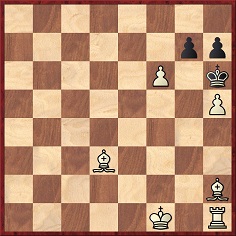
White to move
White wins with 1 Bf4+ g5 2 hxg6 mate.
(3138)
A further definition comes from page 248 of The Chess Player’s Bible by James Eade (Hauppauge, 2004):
‘Double check A discovered check when the moving piece also delivers a check.’
To the position given in C.N. 3138 may be added the following, submitted by Jim Walsh to CHESS, 15 April 1960 (page 236):
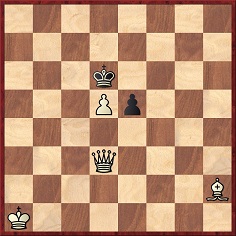
‘Black’s last was ...e5. White replies dxe6 delivering double check without the pawn itself checking.’
On the same page of the magazine the task of constructing a double-check position without any move by a checking piece was described by Wolfgang Heidenfeld as follows: ‘This is easy by using the e.p. capture and has been shown frequently.’ Nonetheless, as noted in C.N. 3138, Heidenfeld himself wrote on page 88 of The Encyclopedia of Chess by H. Golombek (London, 1977) that double check was ‘A discovered check in which both pieces check the hostile king …’
(3485)
As far as we are aware, there is still only one game in chess literature that ended in an en passant capture which administered mate: Gunnar Gundersen v A.H. Faul (Melbourne Christmas Tourney, 1928-29). Most sources, such as Chernev’s books The Chess Companion (page 197) and Wonders and Curiosities of Chess (page 153), have ‘Gaudersen’ and ‘Paul’. The former misspelling also appeared on page 205 of the May 1929 BCM, whereas on page 295 of the November 1958 BCM D.J. Morgan put ‘Gauderson’. However, both players’ names were correct when the game was published on page 124 of Chess Review, April 1959. See also pages 405-406 of the September 1979 BCM.
(3139)
From page 62 of the Australasian (Melbourne), 16 February 1929:

A blindfold game from page 209 of the December 1948 Schweizerische Schachzeitung:
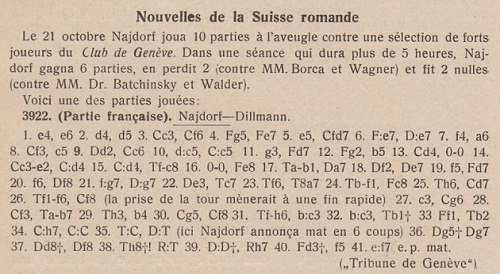
The final move has a typo, of course, and Najdorf’s announced mate was not forced (36...Kh8).
1 e4 e6 2 d4 d5 3 Nc3 Nf6 4 Bg5 Be7 5 e5 Nfd7 6 Bxe7 Qxe7 7 f4 a6 8 Nf3 c5 9 Qd2 Nc6 10 dxc5 Nxc5 11 g3 Bd7 12 Bg2 b5 13 Nd4 O-O 14 Nce2 Nxd4 15 Nxd4 Rfc8 16 O-O Be8 17 Rab1 Qa7 18 Qf2 Qe7 19 f5 Bd7 20 f6 Qf8 21 fxg7 Qxg7 22 Qe3 Rc7 23 Rf6 Raa7 24 Rbf1 Bc8 25 Rh6 Nd7
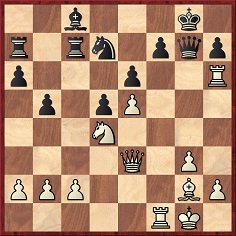
26 Rff6 Nf8 27 c3 Ng6 28 Nf3 Rab7 29 Rh3 b4 30 Ng5 Nf8 31 Rfh6 bxc3 32 bxc3 Rb1+ 33 Bf1 Rb2 34 Nxh7 Nxh7 35 Rxh7 Qxh7
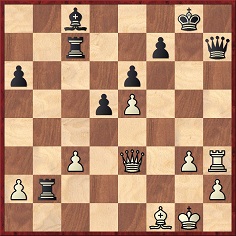
The announcement: 36 Qg5+ Qg7 37 Qd8+ Qf8 38 Rh8+ Kxh8 39 Qxf8+ Kh7 40 Bd3+ f5 41 exf6 mate.
Georges Dillmann of Geneva died on 1 August 1983, aged 61 (Schweizerische Schachzeitung, September 1983, page 366).
On the topic of an en passant capture giving mate, Christian Sánchez draws attention to page 24 of The Delights of Chess by Assiac (London, 1960), which had the conclusion of a game won by T.T. Godwin:
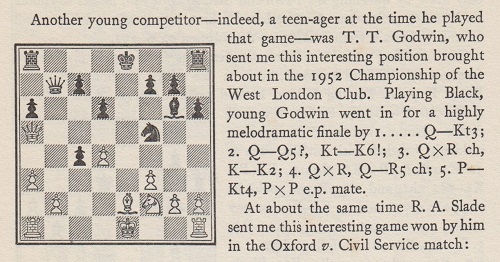
1...Qb6 2 Qd5 Ne3 3 Qxa8+ Ke7 4 Qxh8 Qa5+
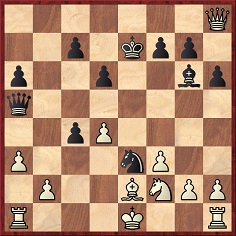
5 b4 cxb3 mate.
See too the January 2023 game Hammer v Carlsen, which has been widely publicized.
C.N. 179 noted that it is also relatively rare for an en passant capture to cause resignation. The specimen given was L.L. Labatt v Em. Lasker, New Orleans, 1907 (18 exd6 Resigns).
C.N. 4003 referred to a report that Zukertort had won a game in Bradford against Mark Dawson wherein he specified the pawn with which he would compel his opponent to mate him. Paul Valois (Leeds, England) has now found that the game was mentioned, although not given, in the Bradford Observer Budget of 22 November 1884. Zukertort obliged Black to mate with his pawn at a7.
The game was played on 20 November, and the same day Zukertort composed the following problem, dedicated to Alderman F. Priestman, the President of Bradford Chess Club:
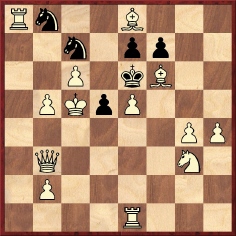
Mate in two
Key: 1 exd6+ (since Black’s last move must have been ...d7-d5).
(4042)
Now, we note that the position was discussed by S. Green, a reader of the Chess Player’s Chronicle, on page 250 of the 10 December 1884 issue:
‘Mr Zukertort, in the composing of this problem, has evidently been to some little pains in the endeavour to prove, from the position, Black’s last move. What it may have been I have now nothing to do with, suffice it to say that I can prove from the position that it is not White’s turn to play. A little superficial examination will show that the “author’s intention” was that Black having played pawn from Q2 to Q4 as his last move, White should then continue with P takes P en pass [sic] (double check) and mate with queen. This would be all very well, but for the white bishop on king’s 8th. With the black pawn stationed on Q2 (where it would be prior to its advance according to the Doctor) I fail to see how the white bishop secured so snug a retreat, unless via an adjacent board.
If it does not give the Doctor pain, I might even venture to suggest an alteration which would render the position at least sound, which will be its only merit: remove the black P on KB2, transfer the white Kt to KR6 and then it works.’
Michael McDowell (Westcliff-on-sea, England) comments:
‘Green is quite right that the position is illegal, but his “correction” allows an immediate Bf7 mate. It would be easy enough to correct it properly. Moving the knight from g3 to h6, swapping the white pieces on a8 and e8 and adding a black bishop on d8 seems to work, although the knight on b8 is then superfluous. I do not know why there is a white bishop on f6 rather than a white pawn, or why there is a white pawn on b2 at all.
The problem has no historical value. The subject of the “en passant key” pioneer was discussed by John Beasley in The Problemist for May 2004 (pages 391-392) and September 2004 (page 459). He concluded that the first sound example was an anonymous composition on the cover of Deutsche Schachzeitung, March 1858 and, with the help of Hanspeter Suwe, he determined that Max Lange was the composer. Nowadays we have two-movers with multiple variations after an en passant key (13 being the record).’
(4417)
Harlow Bussey Daly – J.L. McCudden
Rye Beach, 24 July 1918
Danvers Opening
1 e4 e5 2 Qh5 Nf6 3 Qxe5+ Be7 4 Nc3 Nc6 5 Qg3 Nb4 6 Kd1 d5 7 a3 d4 8 axb4 dxc3 9 bxc3 Nxe4 10 Qe3 Nf6 11 Bc4 a6 12 h3 O-O 13 Qd3 Bd7 14 Nf3 Bc6 15 Ne5 Bd5 16 Bxd5 Qxd5 17 Qxd5 Nxd5 18 Nd3 Rad8 19 Bb2 Rfe8 20 Re1 Kf8 21 Ba3 b5 22 Bb2 Rd6 23 Nc5 Bf6 24 Rxa6 Rxe1+ 25 Kxe1 Rxa6 26 Nxa6 c6 27 Ke2 Nb6 28 Nb8 Nc4 29 Nd7+ Ke7 30 Nxf6 Kxf6 31 Bc1 Ke5 32 d3 Nd6 33 Be3 Kd5 34 Kd2 Nf5 35 f4 Nh4 36 g4 Ng6 37 Ke2 f6 38 f5 Ne5 39 Bd4 Nd7 40 Kf3 h6 41 Kf4 Nf8 42 h4 Nh7 43 Bc5 h5 44 gxh5
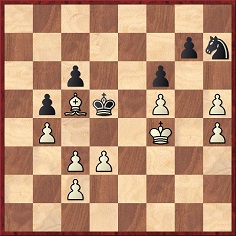
44...g5+ 45 hxg6 Resigns.
The source for this game is the score-sheet shown in our new feature article, The Danvers Opening (1 e4 e5 2 Qh5).
We gave the game’s conclusion on page 220 of the May 1988 BCM, in a ‘Quotes & Queries’ discussion on positions with a choice of en passant captures. The topic had been raised on page 158 of the April 1981 BCM by J.M. Aitken, who gave his game against G. Bakker, Jersey, 28 October 1980. Aitken commented: ‘I think this possibility must be quite unusual; I have not met it previously in my own practice.’ On page 410 of the September 1981 issue, Ian Rogers submitted his win against Murray Smith in the 1980 Australian Championship.
Computer searches today show that a choice of en passant captures is not rare. An old specimen between leading players is the seventh match-game Marshall v Janowsky, Paris, 9 February 1905, e.g. as published on pages 70-71 of volume two of Halpern’s Chess Symposium (New York, 1905):
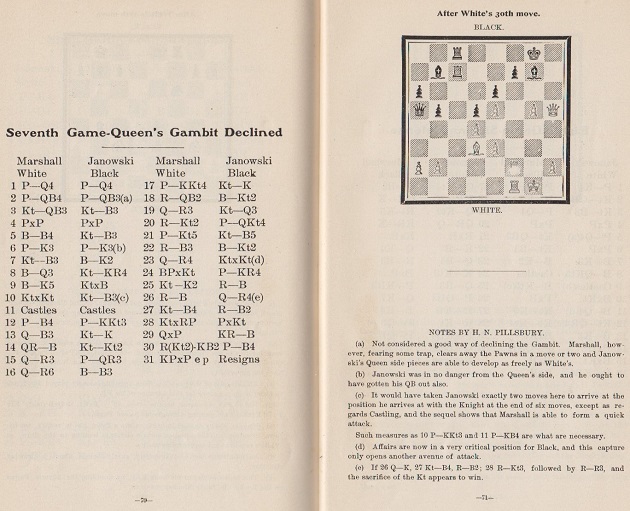
Pillsbury’s notes were originally on page 2 of the Philadelphia Inquirer, 5 March 1905:
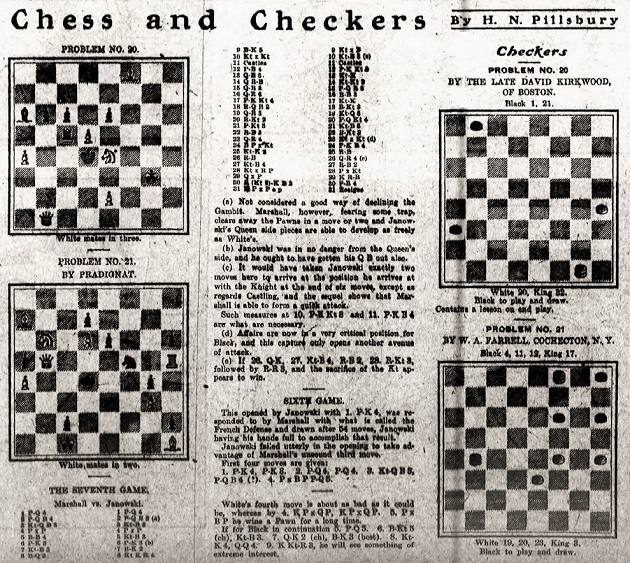
1 d4 d5 2 c4 c6 3 Nc3 Nf6 4 cxd5 cxd5 5 Bf4 Nc6 6 e3 e6 7 Nf3 Be7 8 Bd3 Nh5 9 Be5 Nxe5 10 Nxe5 Nf6 11 O-O O-O 12 f4 g6 13 Qf3 Ne8 14 Rac1 Ng7 15 Qh3 a6 16 Qh6 Bf6 17 g4 Ne8 18 Rc2 Bg7 19 Qh3 Nd6 20 Rg2 b5 21 g5 Nc4 22 Rf3 Bb7 23 Qh4 Nxe5 24 fxe5 h5 25 Ne2 Rc8 26 Rf1 Qa5 27 Nf4 Rc7 28 Nxh5 gxh5 29 Qxh5 Rfc8 30 Rgf2
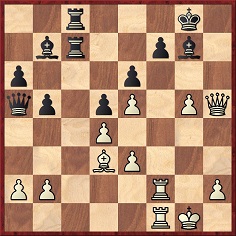
30...f5 31 exf6 Resigns.
Even in the mid-nineteenth century there was still discussion about whether an en passant capture, normally optional, was obligatory in cases where it relieved an otherwise stalemate position. On page 5 of his 1860 book Chess Praxis Staunton wrote:
‘A “forced move” is when a player can only make one move, and the taking a pawn in passing is to be considered a forced move when the player has no other.’
Charles Tomlinson recalled on pages 501-502 of the November 1891 BCM that the above wording had come about after he had submitted for discussion the following position:
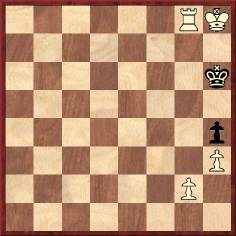
‘I set up the annexed position, and put the question whether, in order to escape a stale mate, the second player could be compelled to take the P en passant. In this position, White having to play, advances the Knight’s Pawn two squares, whereupon Black calls out Stale mate! No, retorts White, you can take the Pawn en passant. But that is at my option, returns Black, it is a purely voluntary move, and I don’t choose to make it. In this contention, I held Black to be in the right, it is a purely voluntary move, and the definition of a stale mate as generally given, to be faulty:- “A stale mate is when a player whose King is not in check, and whose turn it is to play, has no move except such as would put his King in check.” The committee [on revising the laws of chess, comprising Messrs Löwenthal, Ingleby, Wayte and Tomlinson] agreed with me that the law required amendment …’ [This shows that capturing en passant is not always a ‘privilege’, to quote the term used twice on page 93 of An Illustrated Dictionary of Chess by Edward R. Brace.]
Another simple position illustrating the point appeared on page 21 of The Kipping Chess Club Year Book 1943-1944:
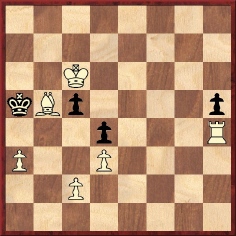
Mate in two moves
Solution: 1 c4 dxc3 2 Ra4 mate.
Suggestions for further reading:
See too our feature article on Stalemate.
Valery Liskovets (Minsk, Belarus) draws our attention to two articles he has contributed to Die Schwalbe: ‘Erzwungener En-Passant-Schlag in direkten Retro-Problemen’ (December 2007, page 299) and ‘Eine historische Bemerkung zum erzwungenen En-Passant-Schlag’ (October 2008, page 585). Noting that the history of the topic can be found in the 1911 book in A.C. White’s Christmas series, Running the Gauntlet (subtitled ‘A study of the capture of pawns en passant in chess problems’ and available on-line), our correspondent lists nine compositions in that source which have a forced en passant capture: 23B, 28, 29, 29B, 40D, 44, 47D, 51A and 59. The last of these, and the oldest specimen of any kind (i.e. whether forced or unforced), is one by Adolf Anderssen of which A.C. White wrote on page 181:
‘Probably no other problem has had so distinguished a role in the history of the game of chess, and as such we must do it honour.’
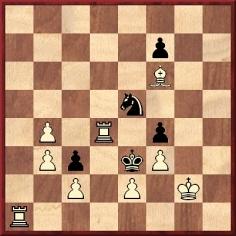
Mate in three (Adolf Anderssen, Leipzig Illustrirte Zeitung, 31 January 1846)
Solution: 1 Re1 Kxd4 2 e4 fxe3 3 Rd1 mate.
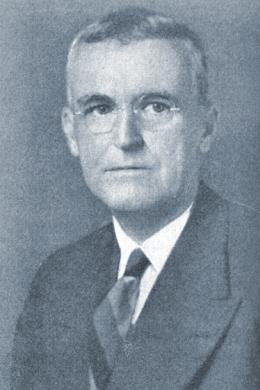
Alain Campbell White
On pages 18-21 White explained the historical background:
‘The option of capturing is after all a privilege, and a good deal can be said both for and against its being compulsory. Indeed, a great deal has been said about it, and for some ten years beginning in 1846 the discussion was one of the features of the column in the Illustrated London News, and elsewhere. It was begun by Saint-Amant, taken up by Anderssen, and gradually became general. The correspondence pages of the magazines bristle with it. We know how the discussion ended, for today in an otherwise stalemate position the capture is always compulsory; and we need not trace all the arguments which were doubtless cogent enough 65 years ago, but which seem very trivial now.’
Mr Liskovets adds two compositions with a forced en passant capture which were published after A.C. White’s book appeared: a three-mover by N. Hoeg dated 1921 and a composition by V. Korolkov published in Schach in 1957. He asks for information about further specimens and adds two questions:
1. Have there been any instances in actual play where a loss has resulted from an obligation to capture en passant?
2. Do any theoretically-won endgame positions exist which feature a forced en passant capture?
Regarding compositions which illustrate the obligatory nature of the en passant capture, Michael McDowell (Westcliff-on-sea, England) quotes a problem by Fritz Giegold (second prize, Deutsche Schachblätter, 1952):
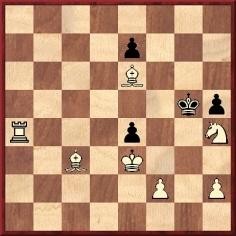
Mate in three
The key-move is 1 Bd4. After 1...Kxh4 (if 1...Kh6, then 2 Ra5.) 2 f4 exf3 (forced) 3 Bf6 mate.
Regarding the shortest possible game ending with mate through an en passant capture, a topic raised in C.N. 179, Michael McDowell gave the following in C.N. 221: 1 b3 h6 2 Bb2 f5 3 e4 Kf7 4 exf5 Qe8 5 Qg4 g5 6 fxg6 mate.
That was in 1982. From Larry Evans’ reply to a reader on page 20 of the April 1993 Chess Life:

In C.N. 254 (late 1982) Philipp Mottet (Zuchwil, Switzerland) submitted 1 e4 e5 2 Qh5 d6 3 g4 Nc6 4 Bh3 Kd7 5 g5+ f5 6 gxf6 mate. However, the task of constructing the shortest game with discovered mate by means of an en passant capture had already been resolved by Pal Benko.
Page 31 of the March 1982 Chess Life:
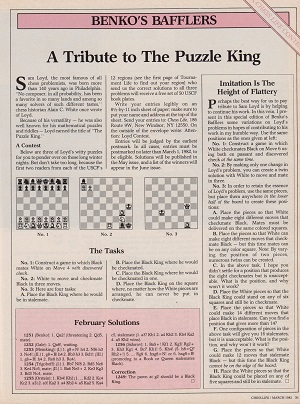
Discussing Sam Loyd, Benko offered this addition:
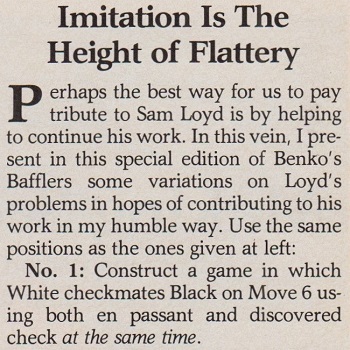
The solution was on page 46 of the April 1982 Chess Life: 1 e4 e5 2 Qh5 Nc6 3 g4 d6 4 Bh3 Kd7 5 g5+ f5 6 gxf6 mate.
From page 654 of Pal Benko My Life, Games and Compositions by P. Benko and J. Silman (Los Angeles, 2003):
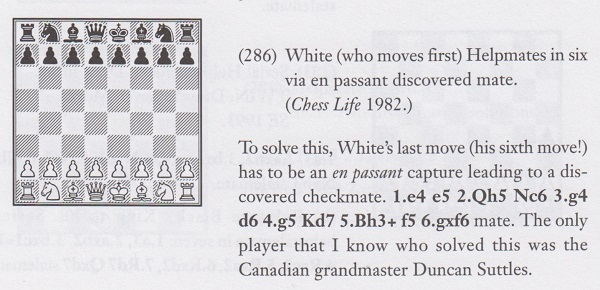
A number of webpages give the source of Benko’s composed game as ‘Chess Life & Review, 1976’, as did page 30 of Chess Braintwisters by Burt Hochberg (New York, 1999). However, C.N. 333 pointed out that the puzzle had been shown by Leonard Barden in a Christmas quiz on page 11 of the Guardian, 24 December 1975. (Page 14 of the 12 January 1976 edition announced that the first correct entry opened was from John Littlewood.)
The earliest appearance of the Benko puzzle that we can cite is on page 675 of the October 1975 Chess Life & Review, in an article by Hochberg:
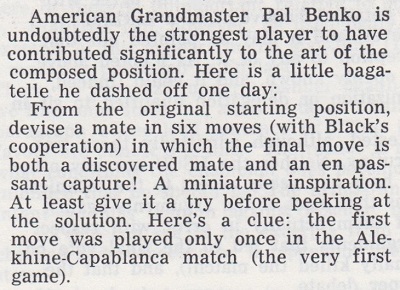
The solution (printed upside-down on the same page):
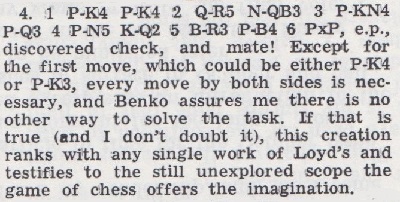
Michael McDowell notes that his invented game concluding with an en passant capture (C.N. 221) was anticipated by C.D. Locock according to page 6 of Synthetic Games by G.P. Jelliss (1998). However, the Locock game appeared not in the January 1921 Chess Amateur (‘CDL CA i 1921’) but on page 152 of the February 1922 Chess Amateur, in T.R. Dawson’s ‘Fairy Chess’ column.
From pages 5-6 of Chess World, 1 January 1950:
‘In 1913, the Melbourne Leader conducted a problem-solving competition, with extra points for “cooks”, “duals”, proofs of impossibility and so on. There were many real problemists in Australia then, and great solvers, a vanished band. The star solver was “Petros” (Dr Bennie).
One three-er of [C.G.] Watson’s had been cooked by Petros. Smarting under this set-back, Watson composed the three-er here diagrammed.
Mate in three
It was a huge success, as Petros wrote claiming no solution; also that the position was impossible. Both claims were wrong. There was only one correct solver – the late Henry Tate.’
The solution was given as follows on page 24:
‘First of all, it can be absolutely proved that Black’s last move must have been either ...P(B2)-B4 or ....P(K2)-K4.
The solution is 1 PxQBP e.p. or 1 PxKP e.p. This is not a dual solution as of course Black cannot have laid himself open to both en passant captures, but only either one or the other.
No wonder this masterpiece of ingenuity hoodwinked the cognoscenti.
An en passant key is not permitted unless it can be demonstrated that Black’s last move was a double pawn hop.
The sole solver’s comment was published. It ran:
“An astonishing bifurcated Siamese twin double-barrelled wonder ... The retrospective double singular key seems to be bullet-proof.”’
(5284)
C.N. 775 gave, from James J. Walsh (Dublin), a selection of aphorisms and observations on the game, including the following:
‘Players indicate an increasing maturity at the game by not automatically making the en passant capture.’
See too C.N. 7650.
From page 93 of An illustrated Dictionary of Chess by Edward R. Brace (London, 1977):
‘In one game at the Haifa 1976 Chess Olympiad an en passant capture was made two moves after the advance of the enemy pawn. The illegality went unnoticed both by players and arbiters and was discovered only after the conclusion of the game. This is the only recorded instance of an “en passant deferred”.’
Can a reader provide more information?
An en passant composition wrapped around a short story appeared, courtesy of the Australasian, on pages 282-283 of the July 1911 BCM. The fact that White could win at once is not the point of the narrative.
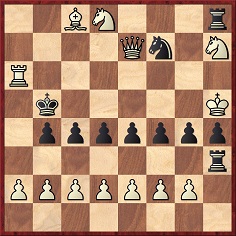
1 a4+ bxa3 2 Qb7+ Kc5 3 b4+ cxb3 4 Rc6+ Kd5 5 Qxf7+ Ke5 6 Qc7+ Kd5 7 c4+ dxc3 8 Rd6+ Ke5 9 d4+ exd3 10 Rxd3+ Ke4 11 Bb7+ Kf5 12 e4+ fxe3 13 Qf7+ Ke5 14 f4+ gxf3 15 Qc7+ Kf5 16 g4+ hxg3 mate.
A detailed article by P.J. Montè on the ‘Origin and history of the en passant rule’ may be found (in Italian and English versions) on pages 270-277 of L’Italia Scacchistica, August 1994.
(3010)
On page 402 of the October 1924 BCM, John Keeble reminisced:
‘Mr Blackburne held one peculiar view on chess. I showed him a problem in which en passant occurred. He at once said he thought that when an International Chess Federation is formed, one of their first acts will be to abolish PxP en passant from the game of chess, and I think he meant it, for in later years he adhered to that view.’
In conversation with Laurent Delahousse in a France 2 television programme on 7 December 2014, Un jour, un destin, the writer and broadcaster Philippe Bouvard, then aged 85, replied as follows (see at approximately one hour 47 minutes and 35 seconds) when asked about his brief extra-marital dalliances:
‘Je pratiquais, vous savez, ce que les joueurs d’échecs appellent la prise en passant.’
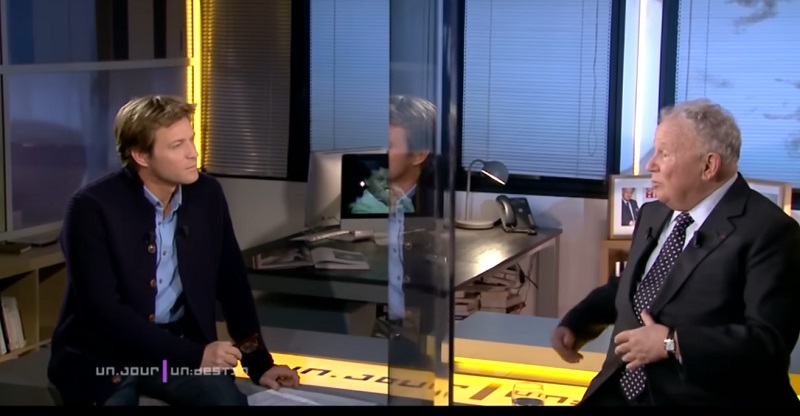
To the Chess Notes main page.
To the Archives for other feature articles.
Copyright: Edward Winter. All rights reserved.